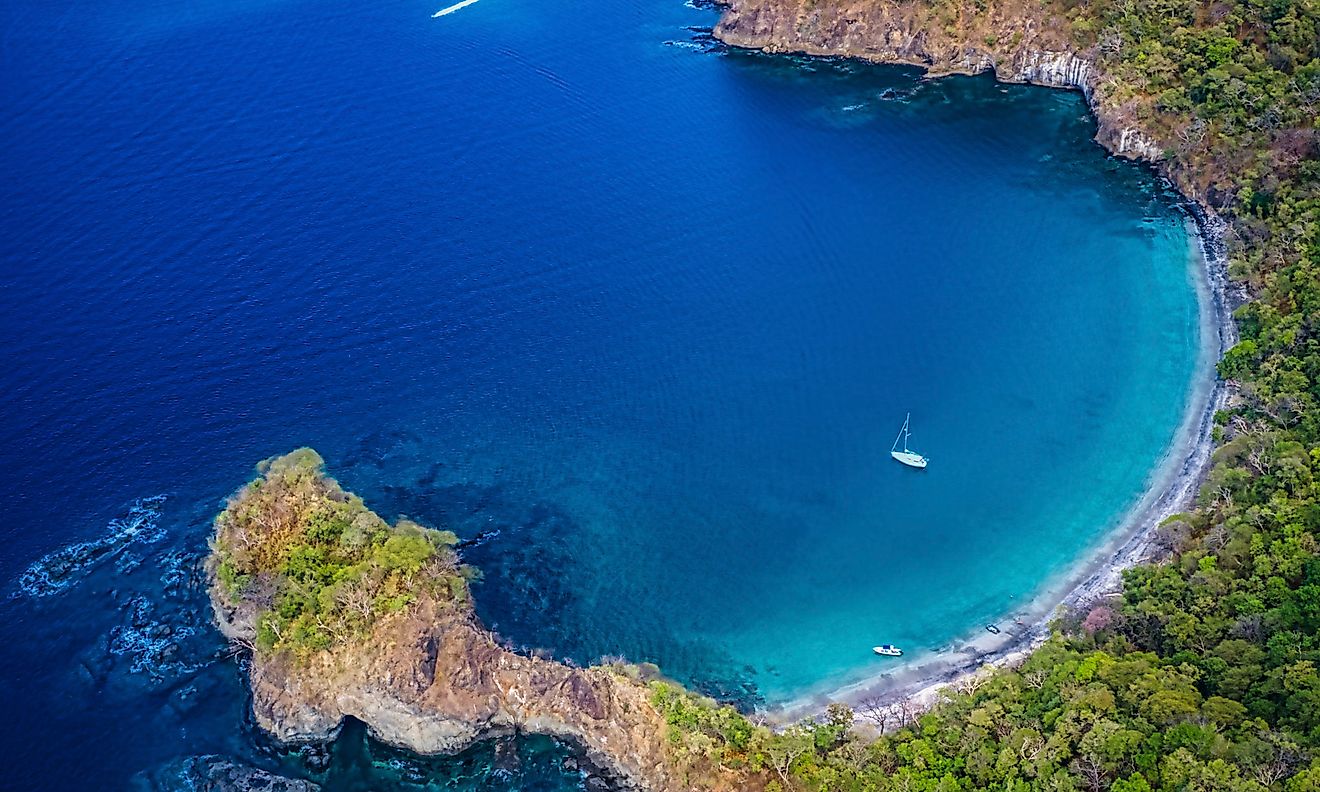Ecological Regions Of Costa Rica

Costa Rica accounts for almost 6% of the world’s biodiversity despite covering only 0.03% of the surface area of the earth. The country is, therefore the main ecotourism destination defined as “come, look, see, experience, but don’t touch” by the country’s authority. Costa Rica has almost 30 weather patterns within the 12 climatic zones. The country is characterized by several large volcanoes and mountains forming part of the Andean-Sierra Madre chains. The variation in elevation makes Costa Rica’s climate separate from the tropical climate in other areas. The country has more distinct ecological regions than any other North American countries. The ecological regions of Costa Rica are looked at below.
Bocas del Toro-San Bastimentos Island-San Blas Mangroves
This ecological region includes the mangrove habitats located along the Caribbean Sea Coast of the southernmost reaches of Costa Rica. It receives an annual rainfall range of between 2,000 and 6,000 millimeters. The rainfall is influenced majorly by the Intertropical Convergence Zone. The mangrove species such as red and white mangrove dominates this region. The mangroves provide habitat for over 133 birds’ species, 55 mammals’ species, 21 species of amphibians, and several reptile species. 36 species of birds and 24 species of mammals in this ecoregion are listed as endangered by the International Union for the Conservation of Nature (IUCN). Human activities such as cattle ranching, bird hunting, fishing, and extraction of firewood are the major threats facing this ecoregion.
Central American Dry Forests
The Central American dry forests are part of the tropical and subtropical dry broadleaf forests biome, and cover a total area of 68,000 square kilometers. The ecoregion is characterized by patches that are scattered in six countries including Nicaragua, El Salvador, Guatemala, Mexico, Honduras, and Costa Rica. Central American dry forests also consist of dry fragments of dry forests scattered in the lowland areas. The climate of the ecoregion is tropical with a longer dry season and an average rainfall of between 1,000 and 2,000 millimeters. The Central American dry forests contain a variety of endemic flora and fauna with 50 endemic plant species such as Rehdera. The forests also provide habitat for large mammal including the endangered spider monkey and the Felis species of cats. Costa Rica has implemented conservation strategy to preserve this ecoregion. However, extraction of wood and agricultural activities is still a threat to the region.
Central American Atlantic Moist Forests
The Central American Atlantic moist forests cover the lowland slopes of Costa Rica, with the moist forest representing the wet tropical jungle. The ecoregion is made up of a tall tropical evergreen forest with tall canopy and sub-canopy trees. The undergrowth is characterized by dwarf palms. Though the ecoregion is biologically diverse, it supports very low level of endemism. The fauna includes mammals, reptiles, butterflies, amphibians, and birds. Logging and clearing of forest are a threat to the species of trees which take longer to grow. The ecoregion has been fragmented and also forms part of the least protected regions in Costa Rica.
Chiapas-Nicaragua
The Chiapas-Nicaragua ecoregion extends from Nicaragua to the borders of Costa Rica. The ecological region is characterized by sparse mangrove due to the high inflow of water. The peak rainfall occurs during the warm months between May and December. The mangrove species in this ecoregion include the Rhizopora mangle, Conocarpus erecta, and Avicennia germinans. The region is also home to 120 species of mammals, 90 species of reptiles, and several species of birds. Deforestation, illegal hunting, and unplanned development are the major threats faced by Chiapas-Nicaragua ecosystem.
Ecological Regions Of Costa Rica
| Ecological Regions in Costa Rica (as per World Wide Fund for Nature) | Biome |
| Bocas del Toro-San Bastimentos Island-San Blas mangroves | Mangrove |
| Central American dry forests | Tropical and Subtropical Dry Broadleaf Forests |
| Central American Atlantic moist forests | Tropical and Subtropical Moist Broadleaf Forests |
| Chiapas-Nicaragua | East Pacific Tropical Marine |
| Cocos Island | East Pacific Tropical Marine |
| Cocos Island moist forests | Tropical and Subtropical Moist Broadleaf Forests |
| Costa Rican seasonal moist forests | Tropical and Subtropical Moist Broadleaf Forests |
| Isthmian-Atlantic moist forests | Tropical and Subtropical Moist Broadleaf Forests |
| Isthmian-Pacific moist forests | Tropical and Subtropical Moist Broadleaf Forests |
| Moist Pacific Coast mangroves | Mangrove |
| Mosquitia-Nicaraguan Caribbean Coast mangroves | Mangrove |
| Nicoya | East Pacific Tropical Marine |
| Rio Negro-Rio San Sun mangroves | Mangrove |
| Southern Dry Pacific Coast mangroves | Mangrove |
| Southwestern Caribbean | Northwestern Atlantic Tropical Marine |
| Talamanca Paramo | Montane Grasslands and Shrublands |
| Talamancan montane forests | Tropical and Subtropical Moist Broadleaf Forests |











